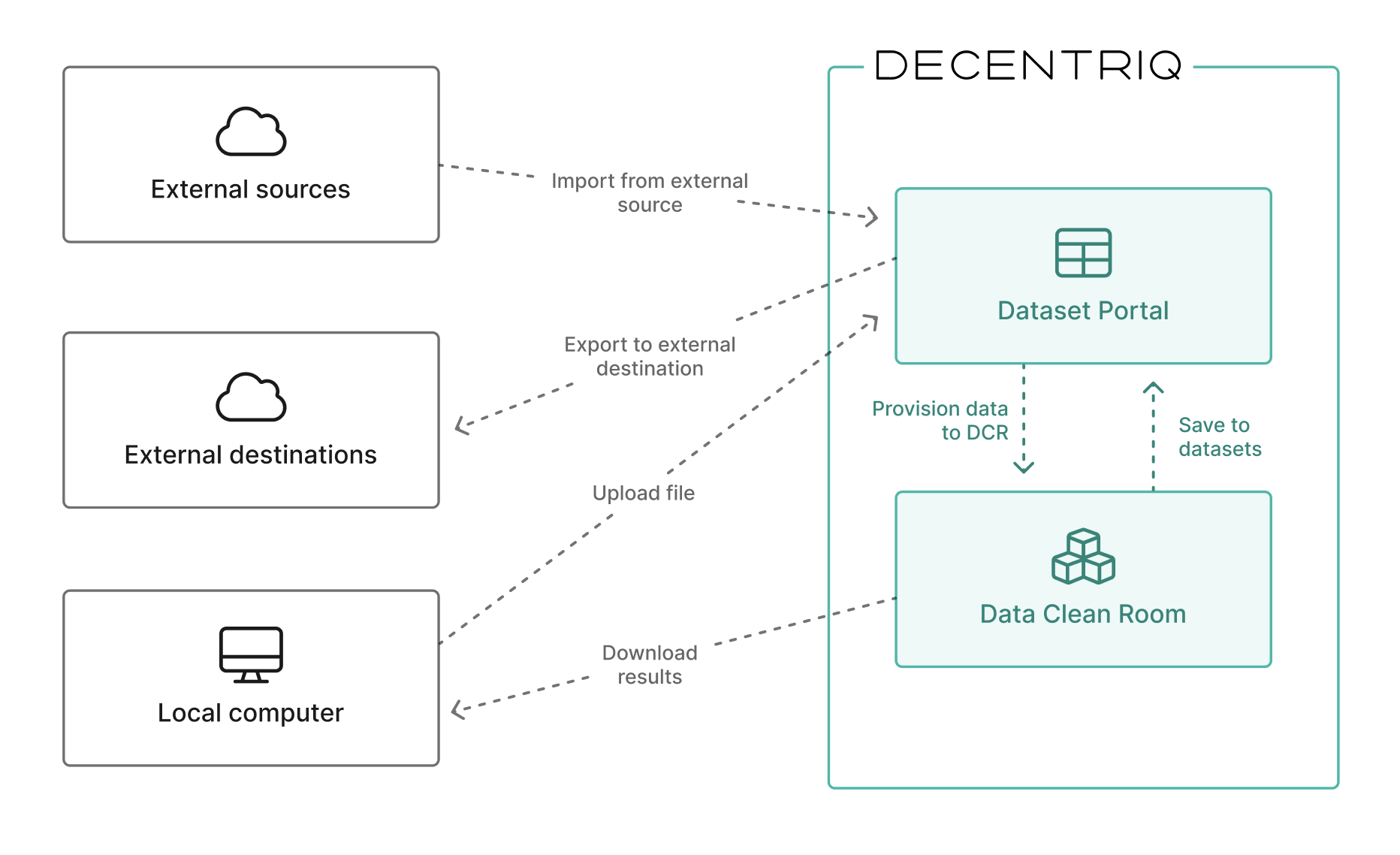Getting started with data management
This section describes how data is imported to and exported from Decentriq and how it is managed therein. Data in Decentriq is always encrypted with a data owner-specific key which thanks to confidential computing is not accessible to Decentriq. For more details about how Decentriq achieves its unique security guarantees, please refer to the technical whitepaper.
All your datasets in Decentriq can be managed in the Dataset Portal, see Manage data in the Dataset Portal. Imports from external sources and exports to external destinations are also triggered from here.
Data flows
Data flows according to the following diagram.

- Data import: Data can be imported into Decentriq from an external source (e.g. cloud storage bucket), or by uploading a file from the user's computer. See Import data from an external source and Upload a file.
- Data export: Data can be exported from Decentriq by exporting to an external destination (e.g. cloud storage bucket, DSPs, …) or by downloading it as a file. See Export data to an external destination and Download as a file
- Provisioning to a DCR: Provisioning is the process of making your data usable in a DCR. See Media DCR seed audience, Media DCR base audience, or Advanced Analytics DCR.
- Saving results from a DCR: Results from DCRs can be saved as a dataset. See Save DCR results to datasets
Dataset types
Datasets can be unstructured files or structured tables. Structured datasets always have a data schema which is validated and enforced at upload time.
Datalabs for Media DCR participation
For Media DCR base audience participation, datasets must be organized into a Datalab - a validated collection that ensures compliance with Media DCR requirements. See Getting started with Datalabs.